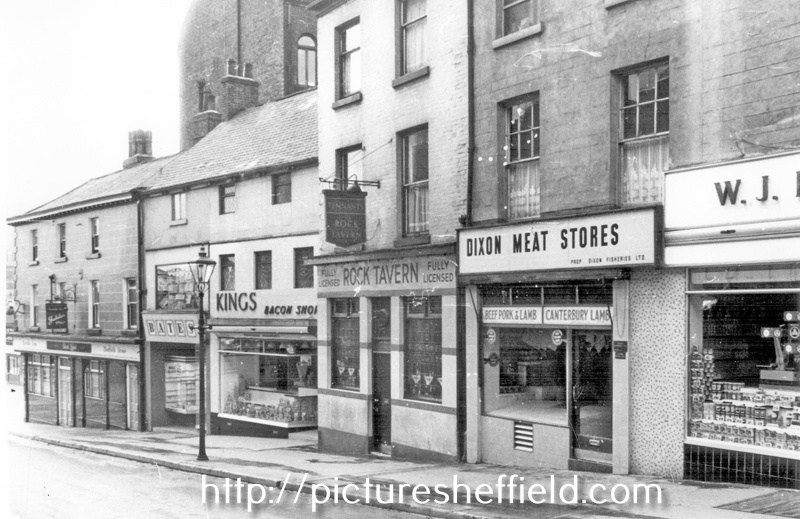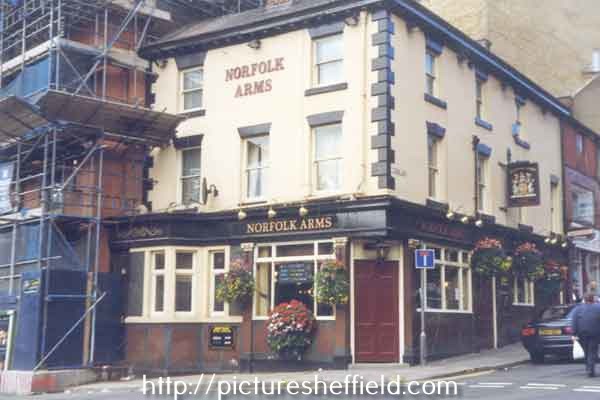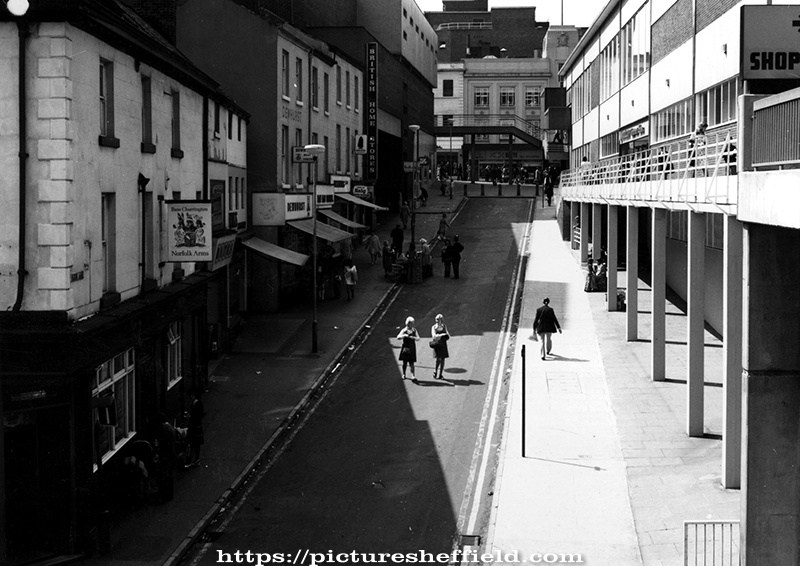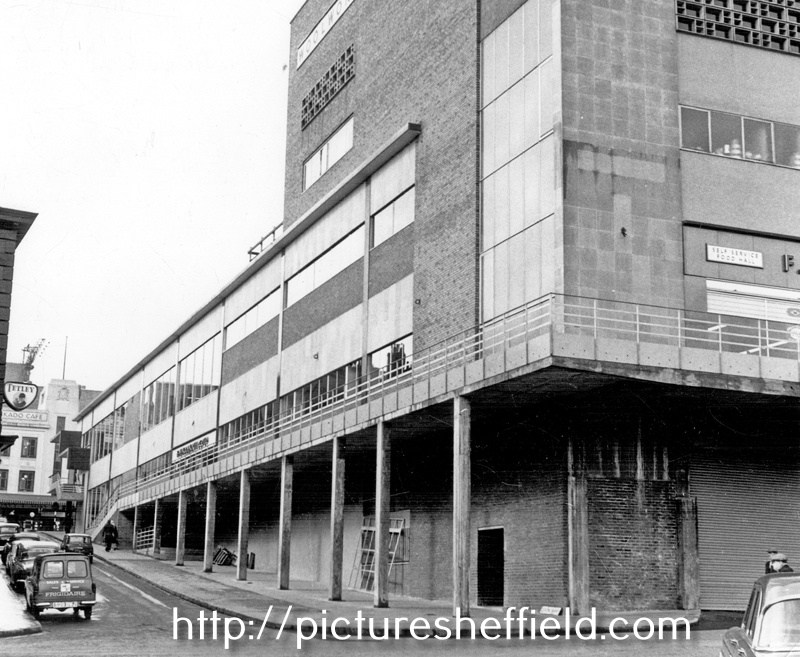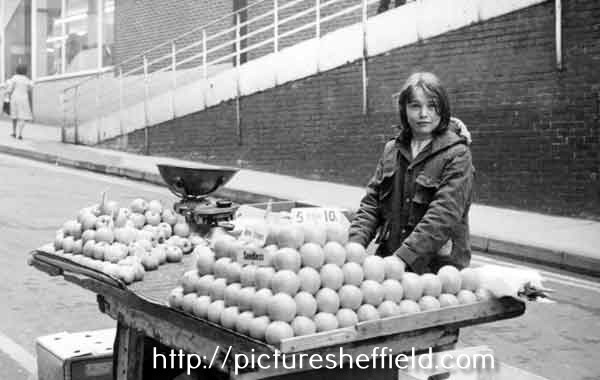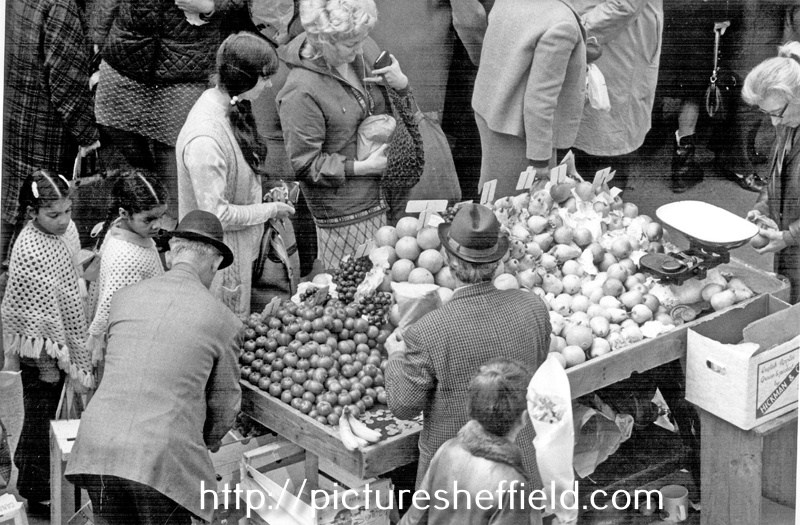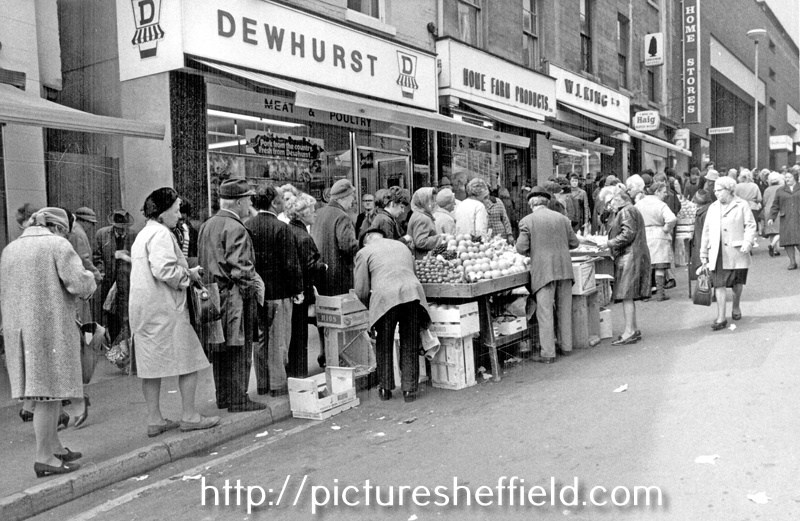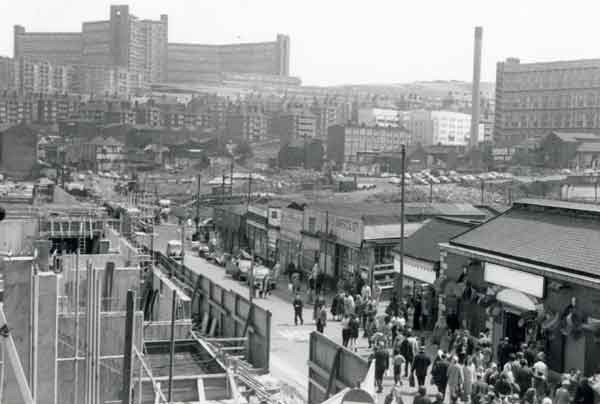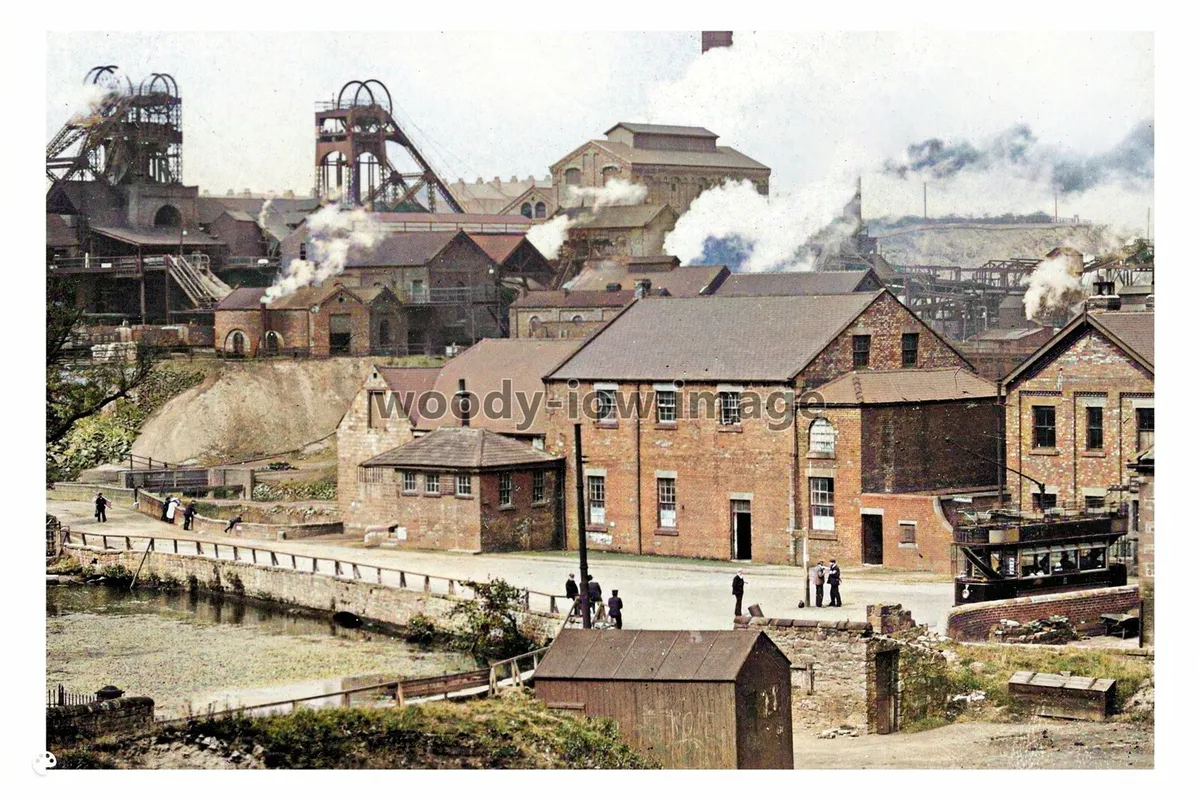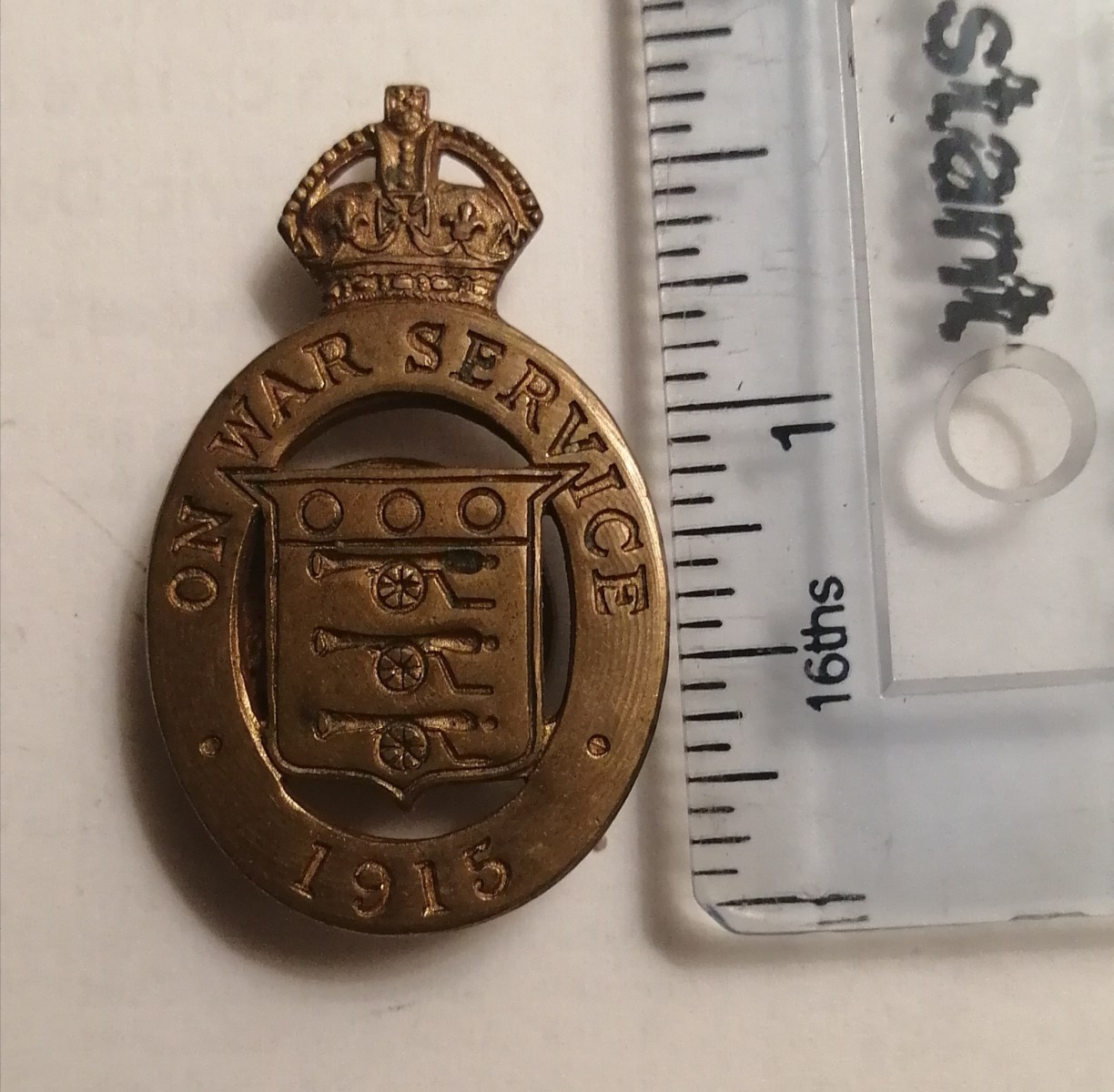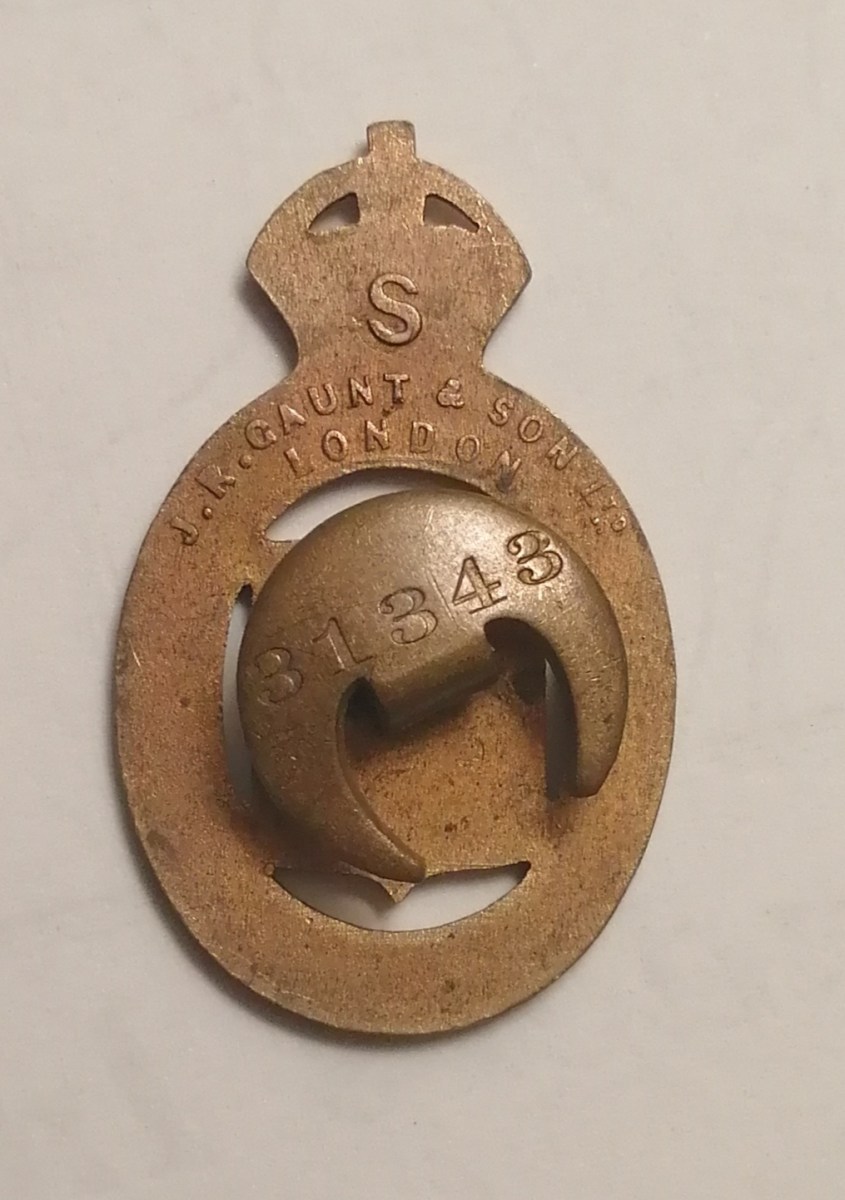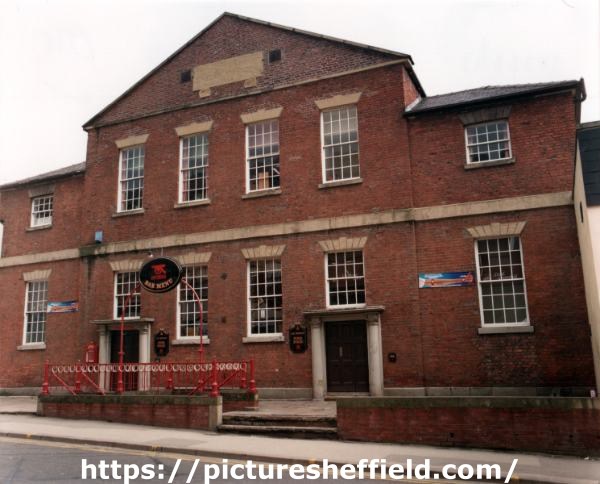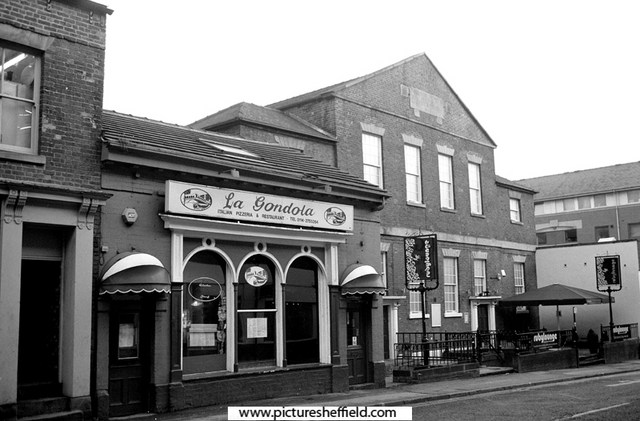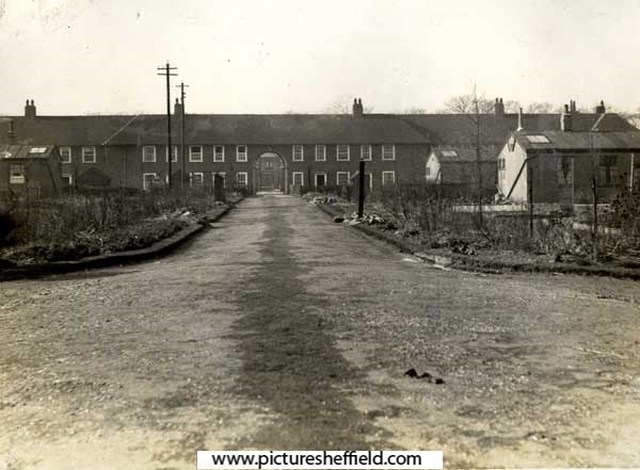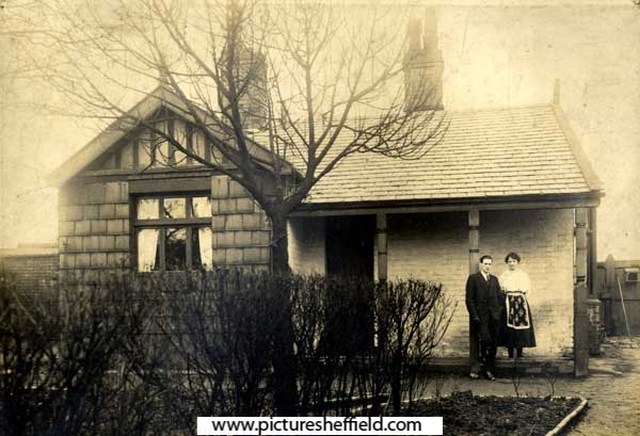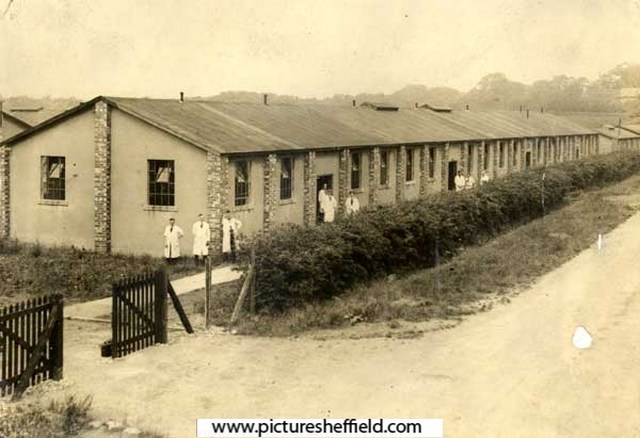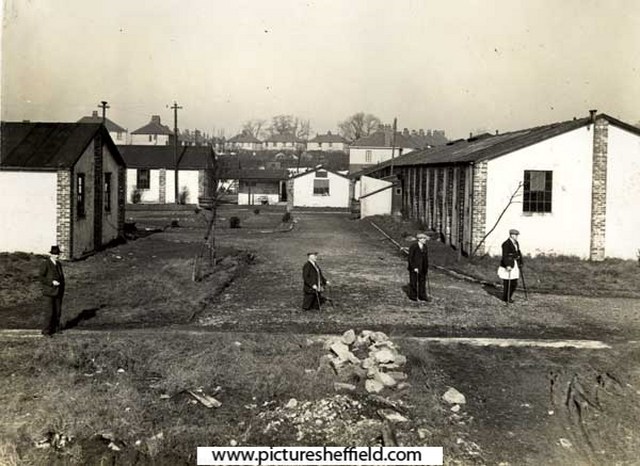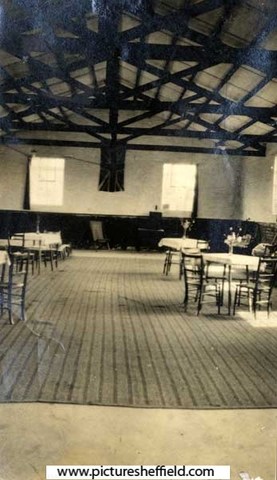Search the Community
Showing results for 'coal pit lane'.
-

Dixon Lane in Sheffield City Centre
Ponytail replied to Sheffield History's topic in Sheffield History Chat
Dixon Lane, (l. to r.) No. 26, Norfolk Arms, No. 24, T. Bates (Wallpapers) Ltd., paint merchants, No. 22 and 16a, William John King Ltd., provision dealers, No. 20, Rock Tavern, No.18, Dixon Meat Stores. s21768 Norfolk Arms public house, No. 26 Dixon Lane. August 1999.v04579 Dixon Lane (l. to r.) No. 20 Dewhurst, butchers; No. 18 Kings, delicatessen, No.16 Thurston's bakers; No.14 Thresher Drinks Store and side entrance to British Home Stores. https://www.picturesheffield.com/frontend.php?keywords=Ref_No_increment;EQUALS;t14010&pos=56&action=zoom&id=151404 Dixon Lane and Castlefolds, F. W. Woolworths and Co. Ltd., right. 29th March 1962. s14903 Photographer: City Engineers Dept. Dixon Lane looking towards Haymarket, including No 26, Norfolk Arms public house, and British Home Stores, left; F.W. Woolworth and Co, right. 19th May 1975. s00174 Photographer: City Engineer and Surveyors 24122/2. -

Dixon Lane in Sheffield City Centre
Ponytail replied to Sheffield History's topic in Sheffield History Chat
Market Stall, Dixon Lane. t09689 Market Traders 1965. https://www.picturesheffield.com/frontend.php?keywords=Ref_No_increment;EQUALS;s41926&pos=85&action=zoom&id=81905 Market Stall on Dixon Lanet02350 Photographer: Fell. Market Stalls, Dixon Lane and No. 20 J.H. Dewhurst Ltd., butchers; No. 18 Home Farm Products Ltd., pork butchers; No. 22 W.J. King Ltd., provision dealers. t01676 -

Dixon Lane in Sheffield City Centre
Ponytail replied to Sheffield History's topic in Sheffield History Chat
View of shops on Dixon Lane showing the construction of Sheaf Market (left) Hyde Park Flats (background) and Park Hill Flats (extreme right). p01430 This image was originally part of the Tim Hale Photographic Collection. It was purchased at auction in September 2019 through donations from members of the public and a grant from the Graves Trust. -
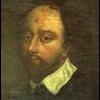
What does "main" mean in a colliery name ?
History dude replied to JS2021's topic in Sheffield History Chat
You only have to look at the OS maps of Sheffield in the 1860s to see all the coal mines. Even today, the odd green space on an estate could be the location of an old mine shaft that they couldn't build on. But if you went back millions of years, Sheffield would have been a steamy swamp with giant Centipedes and MASSIVE Dragonflies. Which has left us with the coal. While in other parts it was a sandy beach that has left us with outcrops of sandstone rock. -

What does "main" mean in a colliery name ?
Lysanderix replied to JS2021's topic in Sheffield History Chat
My finding of the Dore Colliery came about whilst I was researching the early days of the NCB….and Dore was listed in an official publication detailing all the coal mining companies, including those which were dormant. -

What does "main" mean in a colliery name ?
Ponytail replied to JS2021's topic in Sheffield History Chat
Denaby Main Coliery. https://www.nmrs.org.uk/mines-map/coal-mining-in-the-british-isles/yorkshire-coalfield/doncaster/denaby/ Cadeby Main Colliery https://www.nmrs.org.uk/mines-map/coal-mining-in-the-british-isles/yorkshire-coalfield/doncaster/cadeby/ -

What does "main" mean in a colliery name ?
Lysanderix replied to JS2021's topic in Sheffield History Chat
I never realised we had so many collieries. I remember once reading that Dore had once had a coal mine with its HO in the Devonshire Pub. * I had the cutting framed and placed behind the bar. It caused some amusement amongst the old villagers for some to think they were drinking in a miners pub…others , mainly newcomers, thought it far from amusing. * a thin ,shallow seam of readily accessible coal. -

What does "main" mean in a colliery name ?
Ponytail replied to JS2021's topic in Sheffield History Chat
As discussed the first pit sunk in the town was often called Main. Never considered it before, was there ever a Sheffield Main Colliery? Sheffield Collieries at Work 1869. https://www.chrishobbs.com/sheffield/1869shefpits.htm https://en.m.wikipedia.org/wiki/Sheffield_Coal_Company -

What does "main" mean in a colliery name ?
Ponytail replied to JS2021's topic in Sheffield History Chat
Rotherham Main Colliery. https://www.nmrs.org.uk/mines-map/coal-mining-in-the-british-isles/yorkshire-coalfield/sheffield/rotherhammain/ https://en.m.wikipedia.org/wiki/Rotherham_Main_Colliery Rotherham Main Colliery at Canklow. Dalton Main Colliery Ltd. https://en.m.wikipedia.org/wiki/Dalton_Main_Collieries_Ltd. Aldwarke Main Colliery https://en.m.wikipedia.org/wiki/Aldwarke_Main_Colliery Aldwarke Main Colliery Explosion 1875. https://www.nmrs.org.uk/mines-map/accidents-disasters/yorkshire/aldwarke-main-colliery-explosion-rotherham-1875/ Aldwarke Main Colliery Accident 1904. https://www.nmrs.org.uk/mines-map/accidents-disasters/yorkshire/aldwarke-main-colliery-accident-rotherham-1904/ -

What does "main" mean in a colliery name ?
Ponytail replied to JS2021's topic in Sheffield History Chat
Hickleton Main Coal Co. https://www.nmrs.org.uk/mines-map/coal-mining-in-the-british-isles/yorkshire-coalfield/doncaster/hickleton/ Manvers Main Colliery. https://www.nmrs.org.uk/mines-map/coal-mining-in-the-british-isles/yorkshire-coalfield/doncaster/manvers/ Yorkshire Main Colliery. https://www.nmrs.org.uk/mines-map/coal-mining-in-the-british-isles/yorkshire-coalfield/doncaster/yorkshire/ Rossington Main Colliery. https://www.nmrs.org.uk/mines-map/coal-mining-in-the-british-isles/yorkshire-coalfield/doncaster/rossington/ -

What does "main" mean in a colliery name ?
Ponytail replied to JS2021's topic in Sheffield History Chat
Markham Main Colliery. https://www.nmrs.org.uk/mines-map/coal-mining-in-the-british-isles/yorkshire-coalfield/doncaster/markham/ Houghton Main Colliery. https://www.nmrs.org.uk/mines-map/coal-mining-in-the-british-isles/yorkshire-coalfield/barnsley/houghton-main-colliery/ -

What does "main" mean in a colliery name ?
Ponytail replied to JS2021's topic in Sheffield History Chat
Maltby Colliery, formed as Maltby Main Colliery Co. Ltd. 1907. https://www.nmrs.org.uk/mines-map/coal-mining-in-the-british-isles/yorkshire-coalfield/sheffield/maltby-colliery/ -

What does "main" mean in a colliery name ?
Ponytail replied to JS2021's topic in Sheffield History Chat
Referring to Maltby Main F.C. when they were formed about the time WWI all the players worked at Maltby Main. Other Collieries and Steelworks had their own sports teams and brass bands, some kept the traditional names when the Pit or the Works closed. They changed the name to Maltby Miners Welfare in 1959 but returned to the original name 1996. -
Hi Steve. Yes! you are right! On the old picture postcards, I have found a good few mistakes on the name given to places in our area. They put Forge Dam, Endcliffe on one. Another, had a dam in Endcliffe down as Whiteley Woods. A view taken 'FROM' Woodcliffe, looking over 'TO' Quiet Lane, said from Quiet Lane looking over to Woodcliffe. Plus more:-..... I think it is that in a lot of cases, the old photographers didn't really know the area, and what boundary was where. Also I have found, people made notes of the places they had been photographing, but somehow, put them on the wrong picture. Regards Heartshome
-

What does "main" mean in a colliery name ?
History dude replied to JS2021's topic in Sheffield History Chat
Coal is found at different levels in the ground. And in different seams. The main seam would be the biggest deposit of coal in a seam. The seams were given names like Parkgate and Silkstone etc. -
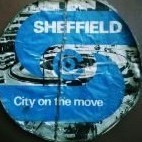
What does "main" mean in a colliery name ?
Busmansholiday replied to JS2021's topic in Sheffield History Chat
Yes, I believe it's to do with the fact that the pits are all removing coal from the same seam (layer) of coal. -

What does "main" mean in a colliery name ?
winco1960 replied to JS2021's topic in Sheffield History Chat
My wife used to work for the coal board at Queens House in Sheffield dealing with accident claims during the eighties. Until the miners strike there were 56 collieries in Yorkshire. Only 6 had the word "Main" in the title. Barnsley, Hickleton, Houghton, Manvers, Markham and Yorkshire ( Doncaster ). From her recollections she believes these sites had multiple shafts and were linked. For instance Manvers was linked underground with Wath, Barnburgh and Kilnhurst but all the coal mined in these pits were all raised at Manvers. -
Card issued to H. Storey, a munitions worker at Hadfield's Ltd., certifying he is serving his country equally with those who have joined the army for active service. October 1914. arc02895 The card reads: At the suggestion of the War Office and with the approval of Lord Kitchener, the Chairman and Directors wish to place on record the fact that H. Storey is engaged in the manufacture of Munitions of War and is thus serving his country equally with those who have joined the army for active service in the field. On War Service Badge worn by my Grandad William Arthur Smith during WWI. He had a reserved occupation at Vickers Ltd., Brightside Lane and wasn't required to serve in the Armed Forces. 1915.
-
National School, No. 35 Carver Street, refurbished as Dickens Inn, Le Metro public house and latterly the Viper Rooms in the cellars. t12674 Nos. 33 La Gondala, Italian Restaurant and 35, Ruby Lounge, (former National School), Carver Street. 2006. c02729 Rear of the Dickens Inn, Le Metro, formerly National School, No. 35 Carver Street from Carver Lane with the spire of St. Matthews Church left. 14th April 1982. https://www.picturesheffield.com/frontend.php?keywords=Ref_No_increment;EQUALS;s24991&pos=15&action=zoom&id=27771 Charles Constantine Ltd., hardware store in the former National School, Carver Street. 31st January 1975. https://www.picturesheffield.com/frontend.php?keywords=Ref_No_increment;EQUALS;s24990&pos=22&action=zoom&id=27770
-
Hello I'm trying to unlock a family mystery and I hope by researching some addresses, who lived there etc in certain years will help me. Any information that would shed light. I would like advice on which records would give be the best information. I’m assuming it would involve a trip to the local studies library so I would like to have a plan before I make the journey to Sheffield. The addresses and years are; 1876 12 ct 17h Bernard St 1887 Castle Court 7 Sylvester Lane 1887 8 Castle Yard, could be 251 or 285 1891 32 ct 3h Fitzwilliam St 1909 1 Regent Lane 1913 25 ct 3h Thomas Street Also was there a different numbering system also use such as for example 13 house 2 court also referred to as 250. Many thanks!
-
A conversation with description of Chapel Walk and Nether Chapel from an earlier time. "Everard: Opposite us is Nether Chapel — the new Nether Chapel we old men should call it, since it supplanted the old building we remember so well. Amongst the seceders from the "Upper Chapel," and one who took a great interest in and was a large subscriber to the building of the Old Nether Chapel, in 1715, was a Mr. John Smith. On the authority of Mr. Hunter's "Gens Sylvestrinae," we learn that this Mr. Smith was born at Bell House, August 28th, 1684, and was baptised at Ecclesfield. He was apprenticed to John Winter, a considerable manufacturer in Sheffield, was admitted to the freedom of the Cutlers' Company in 1705, and became the Master Cutler in 1722. He was deeply engaged in the efforts of the Cutlers' Company to obtain powers to make the Don a navigable river by which Sheffield might be connected with the Humber. On that occasion the interests of the town were committed into his hands; and he went to London and so far brought over members of both Houses of Parliament to approve and vote for the design, that the object was attained in 1726. Mr. Smith was a person of a remarkably religious spirit. He died November 15th, 1753, at the age of sixty-nine, and was buried in the chapel yard. He was the great grandfather of the late Mr. Ebenezer Smith, who married a daughter of the Rev. John Harmer, the minister of Nether Chapel, and was the father of Harmer, Joshua, F. E. and Sydney Smith, now amongst us. Some years ago a curious old relic, in the form of a scrap of writing, came into my hands, which afforded a vivid glimpse of the state of feeling entertained by the Nonconformists of that day with regard to Popery. It is in the form of an announcement made by the clerk officiating at the Nether Chapel, (Jeremiah Marshall byname,) on Sunday, the 4th November, 1750, informing the congregation that a public service would be held on the next day in the chapel on a special occasion. The Rev. John Pye, the uncle of the late Rev. John Pye Smith, was at that time the minister. The following is a copy of the notice in question: — "Please to take notice, that to-morrow will be the return of the 5th of November. There will be a Sermon preached here in commemoration of two remarkable deliverances in our favour, both as Protestants and Englishmen. The one was the Powder Plot, in the reign of King James the First, 1605, now 145 years ago; a plot that could be contrived by none but the Devil and his younger brother, the Pope of Rome, and his accursed crew. The other was the ' Revolution' in the person of the renowned Prince of Orange, 1688, now 62 years ago. He, as an instrument under God, delivered us from Popery and Slavery; and the memory of the great William the III. will be sweet and valuable to every true Briton while the world endures." From what I happen to know, I have little doubt that a worthy ancestor of mine (one of the seceders from the Upper Chapel) would relish and endorse the good old clerk's announcement, and duly attend, with his family, the appointed service. Although I should not like to undertake to defend every word of Mr. Jeremiah Marshall's trenchant phraseology, yet I do admire the spirit of sturdy Protestantism and love of civil and religious liberty, that it expresses. Leonard: I was reading, the other day, in the Sheffield Mercury, of May 12, 1827, a long account of the foundation stone laying on the previous Monday, May 7. It gives in full the "oration" pronounced by the Rev. Thomas Smith on the occasion, which is interesting as containing a sketch of the history of the chapel and of his predecessors in the ministry. The inscription was as follows : — The Lower Chapel built 1715; Re-built by Public Subscription 1827. Thomas Smith, A.M., Minister. William Parker, James Barton, David Haslehurst. Deacons. Watson, Pritchard and Watson, of York, Architects. Below, this inscription, with a few verbal alterations, was repeated in Latin. On a roll of parchment, enclosed in a bottle and deposited under the stone, was the following history: "The Nether Chapel having stood 112 years had become inconvenient to the congregation; and is therefore rebuilt by public subscription at an expense of about £4000, including £700 paid for additional land. A considerable part of this sum has been raised by weekly contributions since April, 1821, chiefly collected by ____" "Here," says the Mercury, "follows a list of twenty-one names, but we forbear inserting them from motives of delicacy." Reading the report now we can only regret that the newspaper, in having such a tender respect for the modesty of the collectors, deprives us of a useful bit of town-lore. Twiss: We can get the names of the successive ministers from Hunter and other sources, but no one ever thinks of recording the deacons' names. Yet such a list would suggest many memories to old Sheffield dissenters. Everard: A reminiscence I have of the opening of Nether Chapel in 1828, enables me to give you a glimpse of one who possesses a fair claim to rank among the Old Sheffield Worthies — the Rev. William Thorpe. He took part in the opening services, and that was his last appearance in his native town, since his death followed not very long after. I have often thought that there could scarcely be a more majestic and dignified appearance in the pulpit, or a nobler specimen of popular pulpit eloquence. William Thorpe was born at Masbro'. His father was the subject of a remarkable conversion.* Assembled with some boon companions one evening at the public-house, the conversation led to the agreement that each of them should take a text at random from the Bible, and try which could best imitate the preaching of the Rev. Charles Wesley, who had been lately visiting the neighbourhood. Three of his companions had successively ridiculed all things sacred, when it came to John Thorpe's turn. He mounted the table, opened the Bible, and his eye fell on the text — " Except ye repent ye shall all likewise perish." He was sobered in a moment. The impression made upon him was profound, and he proceeded to deliver a solemn and earnest discourse to the no small chagrin of his auditors. He was accustomed to say afterwards, "If ever I preached in my life, by the assistance of God, it was at that time." Having finished, he left the room without another word, and from that hour was a changed man. At first he joined the Methodists and was one of their preachers, but afterwards he became the minister of the Independent Chapel at Masbro'. He died there, November 8th, 1776, aged 46, whereupon his widow removed to Sheffield with the children, and she became on intimate terms with my grandmother and family. My father described her as a stout, noble-looking woman; with bright dark eyes, a Roman nose, and hair of raven gloss and blackness. William was very much like his mother, inheriting her features and expression; and, as he advanced in manhood, assumed a similar portly form and dignified mien. At a suitable age he was apprenticed to the "silver-plated" business with a firm, the exact name of which I have forgotten, but of which Mr. Morton, the late Thomas Dunn's maternal grandfather, was a principal partner. William was a very lively youth, full of fun and practical joke; but, at the same time, was clever, intelligent, and well-informed; a great reader, more especially of history, and possessing a memory of an extraordinary kind. On one occasion he was ordered to make a teapot according to the size and pattern of an old one that had been sent with special directions from the owner that the new was not to differ in any respect from the old. Young Thorpe carried out the instructions to the letter, rubbing off the plate and bruising exactly as the old one was bruised. Many of Thorpe's fellow workmen were imbued with the extreme views of Jacobinism, and at their instance he challenged Mr. Macready, the father of the great tragedian, who was at that time the lessee and manager of the Sheffield Theatre, to a public discussion on the causes and principles of the French Revolution. This Mr. Macready accepted; and the meeting took place in the Freemasons' Lodge, in Paradise Square (recently Mr. Hebblethwaite's school-room), which was crowded to excess. The late Mr. William Ibbitt's father belonged to the same trade, and was present on that occasion. According to his account William had quite the mastery over his opponent, and at the end the meeting, by a large majority, voted the youthful champion of political freedom the victor. The Rev. Jehoiada Brewer was at that time the minister of the Queen Street Chapel ; and he held similar political views. William Thorpe was happily brought under his influence, and became a decidedly religious character. At length he entered on the regular discharge of the duties of the Christian ministry, though without passing through the process of an academical training. The first place in which William Thorpe was located was as the pastor of the Independent Church at Shelley, a Yorkshire village, whence, after about a year, he went to Chester. In 1796, he became the minister of Netherfield Chapel, Penistone. In 1800 he removed to London, and thence to Bristol, where he remained to the end of his life. On the memorable occasion of the opening services of the new Nether Chapel, in the month of August, 1828, the chapel was crowded to excess.The preacher was a tall, big man, and very corpulent, but without anything heavy or vulgar about the form and expression of the face. On the contrary, his features, rising above a remarkable double chin, were finely and even delicately formed, more especially the nose and mouth. His high forehead was bald, and what portion of hair he had was of a dark colour, with a touch of grey on his short, slight whiskers, His nose was somewhat of the Roman type; his eyes were black and piercing; with a small mouth and arched eye brows. His voice was remarkable for its compass and power, and was apt to swell into thunder tones as he denounced, in awful terms, the doom of the impenitent, or become modulated into accents of the most persuasive tenderness, in urging sinners to repent and believe in the Saviour. The subject was the Christian doctrine of the Atonement. This he treated in his own peculiar style, and with a fulness of illustration, and a clearness and force of argument that I never heard exceeded; nor, indeed, so much matter on that subject compressed within the limits of a single sermon. It is true he preached for above an hour and a half, hut the attention of the people was riveted from first to last. The impression produced on the minds of his hearers by this discourse was very great. Himself the son of the Rev. John Thorpe, he was the father of another Independent minister of the same name, who was for some years the minister of Mount Zion Chapel. Leighton: Chapel Walk, between Nether Chapel and the Wesleyan Chapel below (built in 1780), formerly came into Norfolk Street by a series of steps. They were removed at the same time as those in Virgins' Walk and East Parade, descending into Campo Lane, by a person named Marriott, a filesmith, who had the control of the highways. Wragg: Chapel Walk is one of our old thoroughfares. It formerly contained, with their backs to it, some very old frame houses, built of lath and plaster." Extract of pages 242- 247, from Reminiscences of old Sheffield, its streets and its people edited by R. E. Leader 1875 from letters and articles in the Sheffield and Rotherham Independent 1872/3.
-
James Curtis, (his father a soldier who'd been stationed in Jamaica) was born at sea aboard HMS Chichester during his parents return voyage to Britain 25 April 1790. Enisted as a Private in the 1st Grenadier Regiment of Foot Guards in Sheffield on 14th September 1812. Served in Spain and Portugal during the Peninsular War and later fought in France and Belgium and at the Battle of Waterloo on 18 June 1815 with Lieutenant Colonel H. P. Townshend's Company, 3rd Battalion. Claiming never to have been wounded in the whole of his service, was discharged from the Army in London on 16 March 1822; paid marching money from London to Sheffield; a journey of 162 miles which took 17 days. James, (according to the parish record) a widower married spinster Alethea Naisbitt on 22 August 1823 at Sheffield Parish Church (now the Cathedral Church of St. Peter and St. Paul). Alethea, born Sheffield in 1797, the daughter of William Naisbitt, a hairdresser. James and Alethea had twelve children, nine of them girls, all born in Sheffield: Jane (1823), Theresa (1826), Clarissa (1827), William (1830), Lucy (1831), Harriett (1833), Mary (1834), Alethea (1837), Hannah (1839), George (1840), Sarah (1841) and John (1842). 1841 Census living at Silver Street Head, James had gone into partnership with Henry Ibbotson in the firm of Ibbotson and Curtis, joiner's tool and brace bit makers with workshops in nearby Lee Croft. The partnership was dissolved 18 December 1841 but James continued to be a joiner's tool maker for the rest of his working life. Alethea died on 18 May 1849 in Harvest Lane, Neepsend aged 52. James never remarried. At the time of his death 20th January 1882, James Curtis was living in Sheffield at Court 4 House 3, Trafalgar Street with Clarissa and the family of her daughter Alethea Linton. Buried at Christ Church, Heeley four days later. Read more about James Curtis and his family in this Totley History Group article dated November 2020: https://www.totleyhistorygroup.org.uk/people-of-interest/james-curtis/
-
She died on March 29th. The chief mourner was the youngest and only surviving daughter of the deceased, and herself between 50 and 60 years of age. My research showed that George Prince appears on the Waterloo Medal Roll 1815. He was a private 1st Battalion 95th Regiment of Foot Captain E. Chawner's Company Polly aged 59 was actually named Mary and can be found in the 1851 census living with her husband George aged 76, a cutler and her daughter Jane aged 15 who is a button cutter, at Law St in the Park District of Sheffield. By 1861 George has died and Mary is working as a charwoman. In 1871 she was working as a laundress. By 1881 now aged 87 she is living with Jane and her husband at Hague Lane and is classed as a pauper claiming relief. At some point after this she must have been admitted to the Workhouse at Fir Vale. PRINCE, Mary (Widow, age 101). Died at Sheffd Union; Buried on March 13, 1888 in Consecrated ground; Grave Number 13, Section U6 of Burngreave Cemetery, Sheffield.
-
Painted Fabrics - The Haig Homes. arc00616 Painted Fabrics Village - 'Wallwork and his wife outside his house'. Sheffield. arc00615 Painted Fabrics Village, Norton Woodseats. arc00613 Painted Fabrics Village, Sheffield. arc00617 Painted Fabrics Village - new factory in the model village at Coal Aston. arc00614
-
Penistone Road from the junction with Barrack Lane (wall of Old Sheffield Barracks not Hillsborough Barracks) looking towards the Pigeon Lofts. s26386 Date: 06/10/1987. Penistone Road looking towards Balaclava Road and Barrack Lane (after the service station). 12th June 1967 The Old Barracks Infirmary (later used as flats) which stood at the junction with Penistone Road and Barrack Lane had at this time been demolished. Due to copyright restrictions only the thumbnail is available to view on Picture Sheffield website. https://www.picturesheffield.com/frontend.php?keywords=Ref_No_increment;EQUALS;s18659&pos=65&action=zoom&id=21320 Copyright. H. Ainscough.

